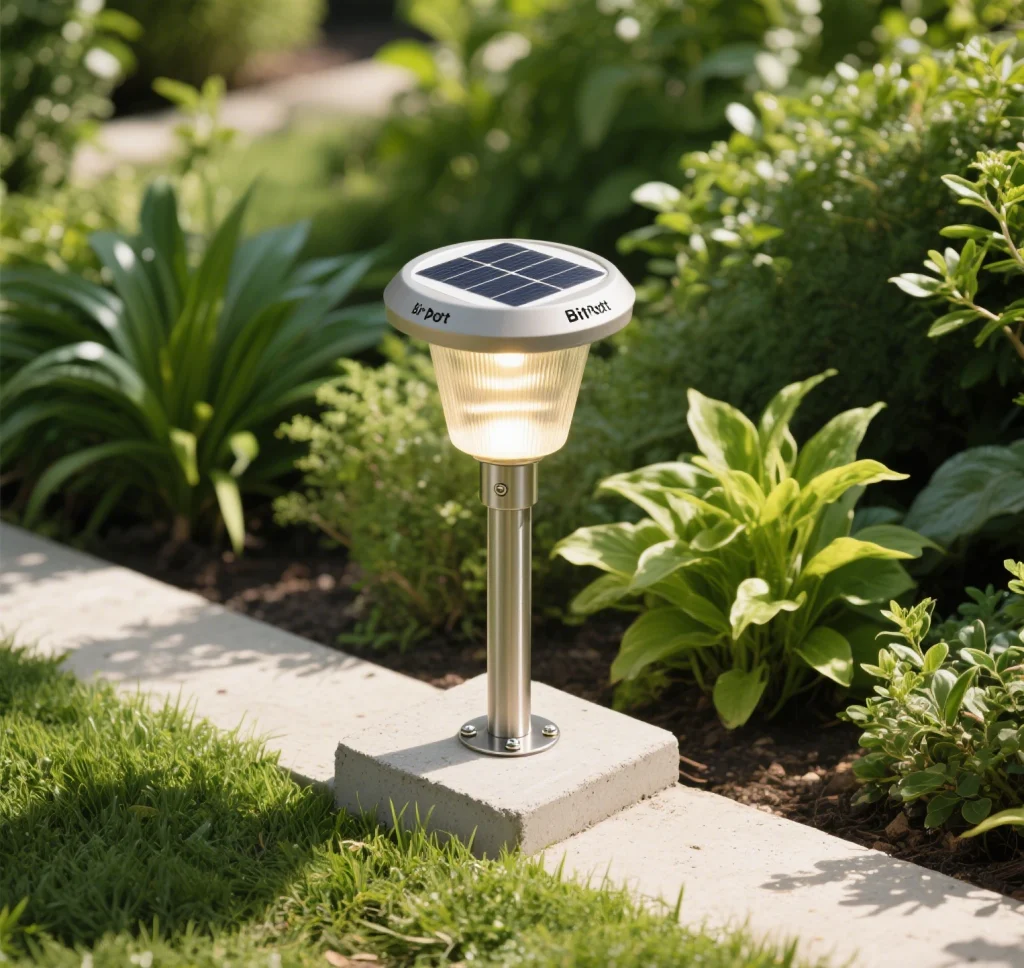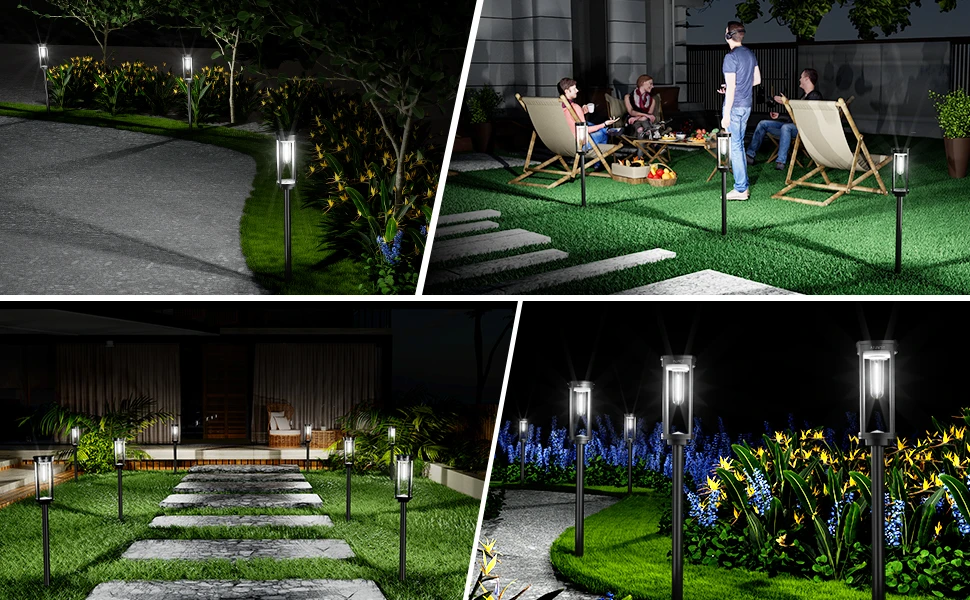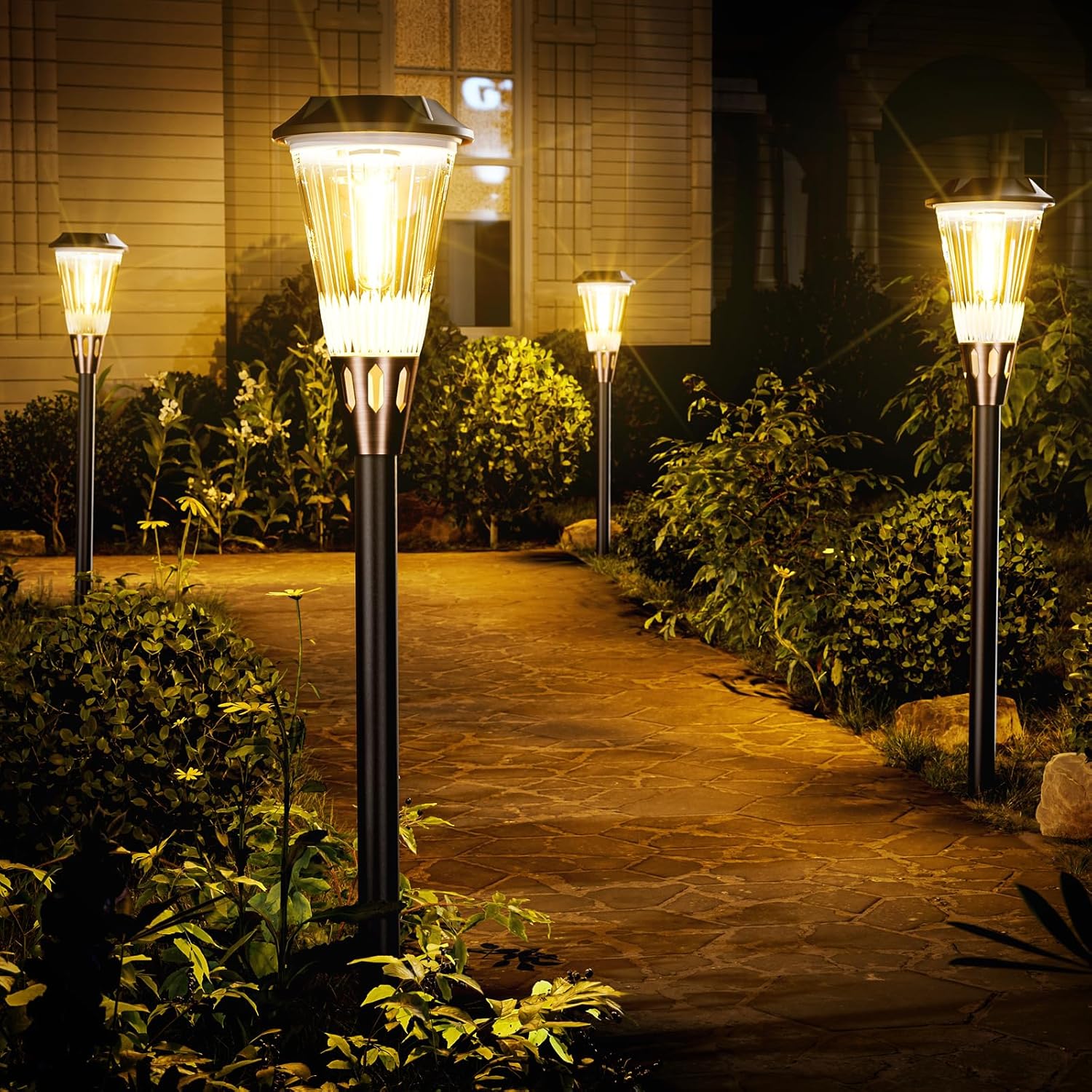Living in the northern United States, where winters bring subzero temperatures, snow, and limited daylight, presents unique challenges for outdoor lighting. For homeowners in these extreme cold climates, solar-powered lighting offers an eco-friendly and cost-effective solution, but standard solar lights often struggle in harsh winter conditions. This guide is tailored for residents of cold U.S. regions, addressing the specific needs of areas like the Midwest, Northeast, and Alaska. We’ll explore advanced features like photovoltaic panel heating films, battery insulation sleeves, and winter lighting mode settings to ensure reliable illumination. Additionally, a solar panel angle calculation table for cold climates will help optimize sunlight absorption during short winter days.
These solutions are designed to maintain performance in temperatures as low as -30°F, ensuring your pathways, driveways, and yards stay safely lit. Let’s dive into how to make solar-powered lighting work for your home in extreme cold.

Why Solar Lighting in Cold Climates?
Solar-powered lighting is an attractive option for northern homeowners, eliminating electricity costs and reducing environmental impact. However, extreme cold, snow accumulation, and reduced daylight hours can hinder performance. Snow-covered panels block sunlight, freezing temperatures drain batteries, and long nights demand extended illumination. Advanced solar lighting technologies address these challenges, making solar-powered lighting viable even in the harshest U.S. winters. By incorporating specialized features, you can enjoy reliable, sustainable lighting year-round.
Photovoltaic Panel Heating Films
Keeping Panels Snow-Free
In cold climates, snow and ice buildup on solar panels can drastically reduce charging efficiency. Photovoltaic panel heating films are a cutting-edge solution, designed to automatically activate in low temperatures to melt snow and frost, ensuring consistent energy capture.
How They Work
- Automatic Activation: Equipped with temperature sensors, these films activate when temperatures drop below 32°F, using minimal energy to warm the panel surface.
- Efficient Design: Thin, transparent films adhere to the panel without obstructing sunlight, maintaining charging efficiency.
- Durability: Built to withstand extreme cold and UV exposure, they’re ideal for regions like Minnesota or Montana.
Installation Tips
- Apply photovoltaic panel heating films during dry, mild weather for secure adhesion.
- Pair with high-efficiency monocrystalline solar panels for optimal performance in low-light conditions.
- Regularly inspect films for wear, especially after heavy snowstorms.
By keeping panels clear, these films ensure your solar-powered lighting remains functional, even during blizzards.
Battery Insulation Sleeves
Protecting Power in Extreme Cold
Cold temperatures can significantly reduce battery performance, causing solar-powered lighting to dim or fail. Battery insulation sleeves use advanced thermal materials to maintain battery efficiency in temperatures as low as -30°F, ensuring consistent illumination.
Key Benefits
- Thermal Protection: Insulating materials like neoprene or aerogel minimize heat loss, keeping batteries operational.
- Energy Retention: Reduces capacity loss by up to 50% in subzero conditions, extending light runtime.
- Easy Installation: Sleeves are designed to fit standard solar light batteries, requiring no specialized tools.
Best Use Cases
Install battery insulation sleeves on solar lights in high-traffic areas like driveways or entryways, where reliable lighting is critical. They’re especially effective in regions like North Dakota or upstate New York, where prolonged cold snaps are common.
Winter Lighting Mode Settings
Optimizing Illumination for Short Days
Winter in northern U.S. regions means shorter days and longer nights, putting extra demand on solar lights. Winter lighting mode settings allow you to customize illumination, prioritizing core areas and conserving energy by limiting light duration to 4-5 hours per night.
How to Configure
- Adjustable Timers: Set lights to activate only during peak activity hours (e.g., 6-10 PM) to save energy.
- Motion Sensors: Use sensors to trigger lights in key areas, reducing unnecessary runtime.
- Brightness Control: Lower brightness levels to extend battery life while maintaining visibility.
Strategic Placement
Apply winter lighting mode settings to lights in essential zones, such as pathways to the front door or garage. This ensures safety without draining batteries during long winter nights.
Solar Panel Angle Calculation Table for Cold Climates
Maximizing sunlight absorption is critical in winter, when daylight hours are limited and the sun sits lower in the sky. The solar panel angle calculation table for cold climates helps northern homeowners adjust panel tilt based on latitude to optimize energy capture.
Table: Optimal Winter Solar Panel Angles
| Latitude (°N) | City Example | Winter Tilt Angle (°) |
|---|---|---|
| 35-40 | Chicago, IL | 55-60 |
| 40-45 | Minneapolis, MN | 60-65 |
| 45-50 | Anchorage, AK | 65-70 |
| 50-55 | Northern Maine | 70-75 |
How to Use the Table
- Identify Latitude: Check your city’s latitude using online tools or GPS.
- Adjust Panel Angle: Tilt solar panels to the recommended angle for your region during winter months (November-February).
- Realign Seasonally: Readjust angles in spring for optimal year-round performance.
Tips for Success
- Use adjustable mounts for easy angle changes.
- Clear snow from panels regularly, even with photovoltaic panel heating films, to maximize exposure.
- Position panels south-facing to capture the most sunlight.
This table ensures your solar-powered lighting captures every available ray, even in the depths of winter.

Additional Benefits of Cold-Climate Solar Lighting
Cost Efficiency
By eliminating wiring and electricity costs, solar-powered lighting saves money, especially in rural northern areas where utility bills can be high.
Environmental Impact
Solar lights reduce reliance on fossil fuels, aligning with the eco-conscious values of many northern U.S. homeowners.
Reliability
With features like photovoltaic panel heating films and battery insulation sleeves, these lights are built to perform in extreme conditions, providing peace of mind during power outages or storms.
Choosing the Right Solar Lighting Products
When selecting solar lights for cold climates, consider:
- Cold Tolerance: Look for products rated for -30°F or lower.
- Battery Type: Opt for lithium-ion batteries with battery insulation sleeves for better cold-weather performance.
- Panel Efficiency: Choose monocrystalline panels with photovoltaic panel heating films for maximum energy capture.
- Certifications: Ensure products meet IP65 or higher weatherproofing standards.
Brands like FrostGlow and ArcticLight specialize in cold-climate solar lighting, offering features tailored for extreme winters.
Practical Installation and Maintenance Tips
- Site Selection: Place solar panels in unobstructed, south-facing locations to maximize sunlight exposure.
- Snow Management: Pair photovoltaic panel heating films with regular snow brushing for optimal performance.
- Battery Checks: Inspect battery insulation sleeves annually for wear and ensure batteries are fully charged before winter.
- Mode Adjustments: Update winter lighting mode settings monthly to adapt to changing daylight patterns.
Conclusion
For homeowners in northern U.S. regions, solar-powered lighting is a reliable, eco-friendly way to illuminate outdoor spaces, even in extreme cold. By incorporating photovoltaic panel heating films, battery insulation sleeves, and winter lighting mode settings, you can overcome winter challenges and ensure consistent performance. The solar panel angle calculation table for cold climates provides a practical tool to maximize sunlight capture, keeping your home safe and welcoming.
Invest in cold-climate solar lighting today to enjoy sustainable, cost-effective illumination that stands up to the harshest winters. With the right setup, your outdoor spaces will remain bright and functional, no matter how low the temperature drops.


Leave a Reply